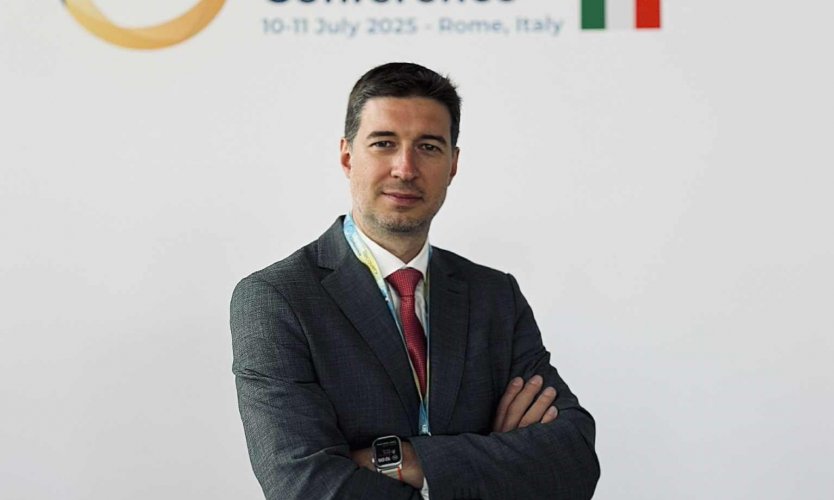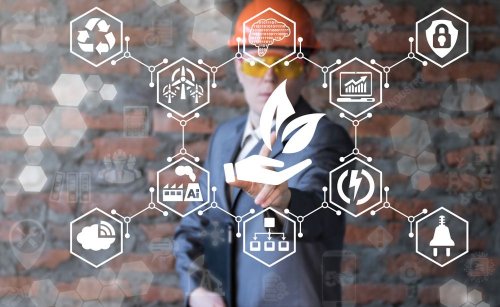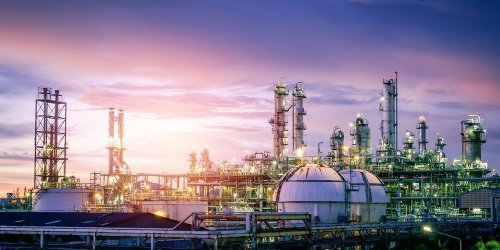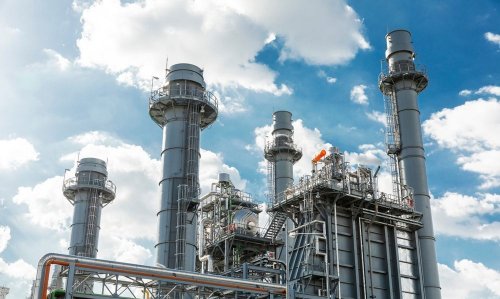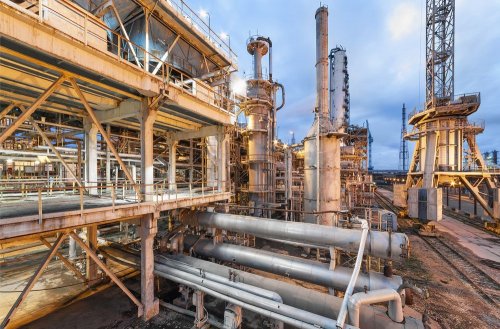I have recently started running, so I am constantly drawn to draw some analogies between ecology and running. Therefore, in running terms, obtaining an Integrated Environmental Permit by an industrial enterprise is a marathon for me. It is a difficult long distance that requires careful planning and preparation, but in the end it becomes clear that it was worth it.
On August 8, 2025, the Law of Ukraine "On Integrated Prevention and Control of Industrial Pollution" came into force. It creates new European rules in the country, where an enterprise receives one Integrated Environmental Permit instead of three separate documents (permits for emissions, special water use, and waste operations). It sounds like a simplification, but in practice it is a complex, disciplined process with a high standard of proof and public accountability.
The law is already in force, which means the clock has started ticking. The deadline for submitting an application for an Integrated Permit is August 8, 2028 (3 years after the Law enters into force). And from August 8, 2029, all "old" permits will be automatically revoked. It seems that there is still a lot of time (it is almost 3 years!), but this is only at first glance.
What the law changes and what the Integrated Environmental Permit means
An integrated environmental permit is a document that grants the right to conduct activities related to the operation of an enterprise. The list of activities that must receive an Integrated Permit is defined in the Annex to the Law.
Almost all large industrial facilities in the energy, mining and metals, agriculture, chemical, cement, and food industries, as well as enterprises engaged in the production of glass, chemicals, fertilizers, pharmaceuticals, waste management, and many other enterprises that have a significant impact on the environment are subject to the Law.
The integrated permit is issued by the Ministry of Environment (now the Ministry of Economy) and covers all the main components of impact – air, water, waste, soil – in a single decision with integrated conditions. With such a permit, separate "classic" permits are no longer required if their conditions are covered by the integrated document.
When issuing permits, the Law is based on Best Available Techniques and Management Methods (BAT), which have already been adopted in the European Union through special reference documents and conclusions. In Ukraine, such conclusions will come into effect four years after the end or cancellation of martial law. However, this does not mean that there is no need to obtain an Integrated Permit before this date; simply, BAT will not be a mandatory condition for issuing permits.
Integrated Permit Application Procedure
The procedure for obtaining an Integrated Permit is more complicated than it may seem to some. The application is submitted electronically through the Unified State Register of Integrated Environmental Permits and includes a detailed description of the operator, facilities, raw materials, emission sources, water use and waste, as well as an assessment of compliance with the best available technologies and management practices and a non-technical summary for a wide audience.
In fact, it is necessary to prepare a package of documents that would have to be submitted for all three existing permits – for emissions, special water use and waste operations. Each of these sections has a lot of its own nuances, so I will not dwell on the details, but will point out what is new:
- Together with the application, the basic report (if available, when there are risks of soil and groundwater contamination), the results of the environmental impact assessment (EIA) (where required), and other mandatory attachments are to be submitted. The basic report includes information on the condition of land and groundwater at the time of issuance of the Integrated Permit. This will require measuring the levels of land and groundwater contamination, taking into account the possibility of contamination by hazardous substances.
- Public hearings become mandatory both when obtaining the Integrated Permit for the first time and when making amendments to it (except for simplified cases). During the public hearing process, the permit application and all supplementary documents will be reviewed. That is, the entire document package of the enterprise must be published and discussed in detail by interested parties.
- Within the procedure, “competent authorities” may provide their conclusions. These authorities include regional and city state administrations, local self-government bodies, and other executive authorities. In addition, before obtaining the Integrated Permit, the enterprise must undergo an inspection by the State Environmental Inspectorate, resulting in the preparation of the relevant act. In order to discuss all these conclusions and acts, the permitting authority convenes a coordination meeting before issuing the Integrated Permit, at which a decision is made regarding the draft of the future permit.
For companies planning to decommission facilities, the Law provides for a separate scenario. The application must be accompanied by a decommissioning obligation with a reasonable end-of-life (but not more than 10 years from the date the Law comes into force). The conditions of the permit are then fixed based on the environmental standards in force at the time of submission, and the end-of-life is not revised in the document.
Why this is a team relay, not a solo run
Experience with the implementation of integrated permits in the European Union shows that an Integrated Permit is a project with a substantial expert component and a strong data engineering element, not simply “filing folders.” The most common challenges enterprises will face include:
- Collection of initial data. It is necessary to fully inventory stationary emission sources, substances, technological flows, identify water intake and discharge points, compile water balances, and identify all waste operations, their generation, and classification. These are only the main aspects to be considered when preparing the permit application.
- Development of the document package. The technical section must seamlessly integrate aspects of atmospheric emissions, water intake and discharges, and waste management. In the future, all these aspects must comply with the requirements of best available techniques and management practices. Any inconsistencies or “gaps” in the data lead to refusals, additional rounds of public discussion, and loss of time.
- Public procedures and digitalization. The Register makes the process transparent – which is a plus. However, this also means that the schedule of public hearings, reports, and comments from executive authorities become part of the dossier and will affect the timeline.
- Complexity of the procedure. Obtaining the Integrated Permit consists of several stages. Mistakes in preparing documents or inaccurate explanations during discussions can roll the entire process back to the beginning and put the enterprise’s operations at risk. This is a case where stumbling halfway through the race is not an option.
Thus, it is almost impossible for a large or medium-sized enterprise to go through this process independently without the risk of resubmissions and missing deadlines. This is the case when I recommend seeking help from a professional consulting team to avoid wasting time, money, and suffering reputational risks.
Will the industry manage under wartime conditions?
Yes, if you act quickly and immediately manage the project to obtain an Integrated Permit according to the best international projects. For planning, you need to use Gantt charts to build schedules, the principles of the theory of constraints to identify bottlenecks, and, if necessary, apply flexible agile mechanisms.
It is necessary to plan the entire cycle of obtaining the Permit in advance, start the necessary research in a timely manner, take soil and water samples, perform complex analyzes and collect initial data for engineering calculations.
To prepare a complete package of documents, it is necessary to actually develop 3 existing permits (emissions, special water use, waste). The practice of the Center for Ecology and Development of New Technologies (CERN), which I head, shows that obtaining each of these permits for a large enterprise takes up to 1 year. All three simultaneously can be developed in 1.5-2 years. Add to this the timeframe for a possible EIA procedure, which will take 5-6 months.
Our graphs show that if you have a well-prepared package of documents and no repeated submissions, the application process takes approximately 9-10 months (including double preliminary review of the application). For a large enterprise, it may take up to 1 month to register the installation and upload the application to the register. Add a buffer for revisions and public hearings, and you get a realistic timeline. The war adds logistical and personnel risks, but the digital registry and unified requirements minimize time losses if the package is prepared professionally.
In addition, the existing number of experts who are generally capable of preparing such complex documents is not enough to serve all industrial enterprises. The law gives 3 years to file an application, but the "last carriage" will definitely be overcrowded.
It is advisable for large industrial operators to start working in this direction as early as 2026 in order to have time to complete all research, modeling, and collect the initial data in accordance with the best available technologies. Medium-sized enterprises can start in 2027 to have time to adjust their technologies and to go through public communications without a rush. Formally, this is a recommendation, but it is based on the hard math of the Law's timeline and extensive personal experience.
Conclusions
The Law "On Integrated Prevention and Control of Industrial Pollution" sets an ambitious but quite realistic trajectory for Ukraine's environmental modernization. There is a tremendous amount of work ahead, requiring attention to detail, consistency, and strategic vision. Three years to submit an application is not a luxury of time, but a minimum period for those who want to go through the process calmly and reliably. Large enterprises should start the process as early as 2026, and medium-sized ones – in 2027.
Thus, obtaining the Integrated Permit is not just a formality. It means proving that production can be efficient, modern and environmentally responsible. This permit will become a marker of technological maturity and partnership between the state and business.

